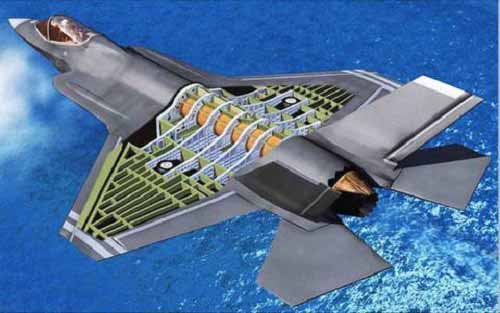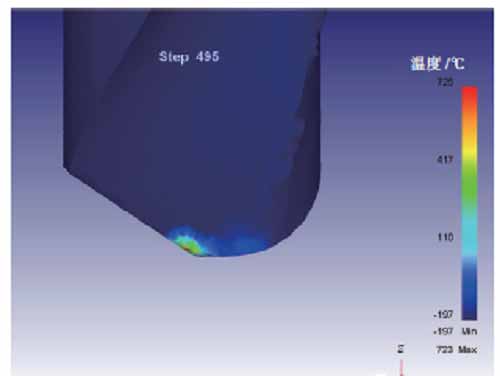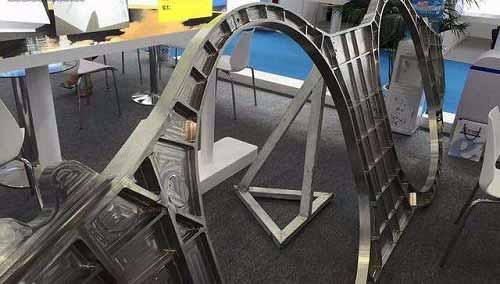Detailed aviation manufacturing cryogenic processing.(HY-industry technical centre)
The concept of cryogenic processing
-
 Cryogenic refers to cryogenic freezing technology that uses liquid oxygen, liquid fluorine, liquid helium, liquid argon and other cooling media to achieve 100K or less.
Cryogenic refers to cryogenic freezing technology that uses liquid oxygen, liquid fluorine, liquid helium, liquid argon and other cooling media to achieve 100K or less. -
Because liquid nitrogen (LN2) is economical, non-polluting, and does not produce chemical reactions, cryogenic technology often uses liquid nitrogen as a cold source, and uses its phase change endotherm to obtain a low temperature environment of -196 °C. In some cases, cryogenic freezing techniques above 100K are also included in the cryogenic range, such as solid or liquid carbon dioxide as the cooling medium. The application of cryogenic technology in machining can be divided into Cryogenic Processing and Cryogenic Machining. Cryogenic treatment is an extended heat treatment process that enhances the cutting performance of a tool or material by cooling, such as increasing the hardness of the tool or improving the brittleness of the tough material. Cryogenic processing refers to the purpose of reducing tool wear and improving the quality of the machined surface by locally applying a cold source during the cutting process to reduce the temperature in the cutting deformation zone.
-
Cryogenic processing is a typical multidisciplinary cross-cutting technology involving low temperature physics, materials science, thermodynamics, heat transfer, metal cutting principles, measurement and control technology. Cryogenic processing is an important way to improve the cutting performance of difficult-to-machine materials. Relevant research and application have become the frontiers and hotspots of the discipline.
Cooling method of cryogenic processing
 The cooling method of cryogenic processing is divided into three types: cutting area cooling method, workpiece cooling method, and tool cooling method.
The cooling method of cryogenic processing is divided into three types: cutting area cooling method, workpiece cooling method, and tool cooling method.
-
Cutting area cooling method: The liquid nitrogen is directly sprayed into the cutting area to reduce the temperature of the cutting area, cool the tool, and improve the performance of the tool. Liquid nitrogen can be sprayed through an external nozzle or through a pipe inside the machine tool spindle and the tool, released from the micro-holes in the cutting edge of the insert to avoid exposure of machine components, fixtures or sensors to cryogenic gases.
-
Workpiece cooling method: The workpiece is cooled by liquid nitrogen spray before or during processing to make the tough material become more brittle, or the temperature of the polymer material is lower than the glass transition temperature, thereby making the material performance more Conducive to cutting.
-
Tool cooling method: The tool is continuously cooled during machining so that the cutting heat is quickly taken away from the tool, especially at the tip of the tool, and the tool tip is always kept at a lower temperature. This method only cools the tool and does not cool the workpiece without affecting the geometry and mechanical properties of the workpiece.
Research status of cryogenic processing technology
-
 Cryogenic processing is a complex multidisciplinary coupling process involving changes in geometry, materials, heat transfer, and chemistry. At present, it is difficult to establish an analytical model that can describe this process in a complete and accurate manner. Therefore, the main method of research on cryogenic processing is to use finite element simulation of Deform 3D, Advantage, Abaqus and other software to calculate the temperature, strain and strain rate during cryogenic processing; or to carry out actual cutting experiments to observe cryogenic processing. For the influence of part quality, surface integrity, tool wear, etc., the variation of cutting performance and cutting result was found, and the cutting parameters were optimized by the response surface method.
Cryogenic processing is a complex multidisciplinary coupling process involving changes in geometry, materials, heat transfer, and chemistry. At present, it is difficult to establish an analytical model that can describe this process in a complete and accurate manner. Therefore, the main method of research on cryogenic processing is to use finite element simulation of Deform 3D, Advantage, Abaqus and other software to calculate the temperature, strain and strain rate during cryogenic processing; or to carry out actual cutting experiments to observe cryogenic processing. For the influence of part quality, surface integrity, tool wear, etc., the variation of cutting performance and cutting result was found, and the cutting parameters were optimized by the response surface method. -
Commonly used workpiece materials for cryogenic processing include titanium alloys, nickel-based alloys, austenitic stainless steels, and high-speed steels. Among them, Ti-6Al-4V titanium alloy is a dual-phase alloy with good toughness, plasticity and high temperature deformation. It can work for a long time at 400~500°C, and has high yield strength and fatigue strength below 500°C. And thermal stability, is a common material for aero-engine compressor discs, stationary blades, moving blades, casing, combustion chamber casing, exhaust mechanism casing, center body, jet pipe and other parts, and is also a commonly used material in cryogenic processing research.
-
According to rough statistics, in the research literature of cryogenic processing, the proportion of Ti-6Al-4V workpieces is more than 30%, and tungsten carbide tools are often used. Studies have shown that the material removal rate of cryogenically milled Ti-6Al-4V titanium alloy is up to 9500mm3/min and energy saving is 88%. Inconel 718 is a precipitation hardened Nichrome alloy containing niobium and molybdenum. It has high strength, toughness and corrosion resistance below 650 °C, and has high tensile strength, fatigue strength and creep strength at 700 °C. And breaking strength, high oxidation resistance at 1000 ° C, widely used in aero-engine turbine discs, compressor discs, shafts and bearing rings and other force-bearing rotating parts.
-
Inconel718 is easy to work harden and makes cutting difficult. It is one of the most difficult materials to process, and its relative machinability is only 6%~20% of 45# steel. About 10% of cryogenic processing studies use Inconel718 workpieces. In recent years, with the widespread use of Inconel 718, this proportion is still rising rapidly. Studies have shown that deep processing is effective at high speed machining of Inconel 718.
-
In recent years, Carbon Fiber Reinforced Polymer/Plastic (CFRP) has been used more and more widely in aerospace products due to its light weight and high strength. Cryogenic processing technology is also used to improve its cutting performance. For example, research has shown that cryogenic processing has a profound effect on reducing tool edge fillet and fillet wear, and also contributes to improved surface integrity, but produces greater cutting forces and torque. Cryogenic technology improves the quality of Aramid Fiber-Reinforced Composites (AFRC), thus further optimizing depth of cut, feed rate, cooling temperature and liquid nitrogen flow.
-
In terms of processing methods, research on cryogenic processing is more common in turning, accounting for about 60%. In recent years, milling and drilling research for Ti-6Al-4V and Inconel 718 has gradually increased. In order to improve the lubrication effect, the combination of cryogenic processing and micro-lubrication technology can reduce the cutting force by more than 50%. By designing special nozzles that combine cryogenic and micro-lubrication technology, tool life can be significantly improved. Cryogenic processing technology is also integrated with part heating technology. The tool is cooled by liquid nitrogen, and the workpiece is softened by heating, and the cutting performance is improved by a two-pronged process, and good results are obtained. However, studies have shown that this fusion may also deteriorate the thermal conductivity of the workpiece and increase tool wear.
-
Additive manufacturing is an important way to shape difficult materials. However, parts made from additive materials may be more difficult to finish or semi-finish. For example, after forming by vacuum electron beam melting technology, the workability of Ti-6Al-4V parts is worse than that of forgings. However, with semi-finishing using cryogenic processing techniques, the tool’s adhesive wear is significantly reduced, surface integrity is improved, and tool life is increased, providing an option for additive-subtractive material blending. Some foreign companies have developed commercial cryogenic shanks, knives and other equipment to transport liquid nitrogen to the cutting area through internal pipes, which has achieved good application results. However, the internal pipe form of the tool may also affect the cutting performance. For example, studies have shown that using double straight pipes to transport cryogenic gases and lubricating fluids results in smaller cutting forces and longer tool life than using double helix and single straight pipes.
-
At present, cryogenic processing technology is mainly in the experimental research stage. Although some companies are committed to the research and development of cryogenic processing equipment, large-scale industrial applications have not yet arrived, and there are few public reports. Among them, Lockheed Martin uses cryogenic processing technology to manufacture F-35 large titanium structural parts, which allow liquid nitrogen to pass through the internal pipe of the spindle and the tool to the cutting area. Compared with the use of traditional coolant, the processing time is reduced from 44h to 21h, the cutting efficiency is increased by 52%, the tool usage is not increased, the surface integrity of the parts is improved, the white layer is reduced, the energy consumption is reduced, and the elimination is eliminated. The safety of workers is improved by the disposal of discarded cutting fluids. It is estimated that processing costs have been reduced by 30%.

